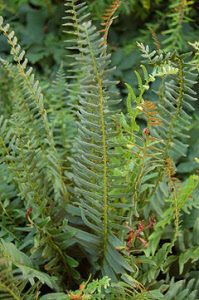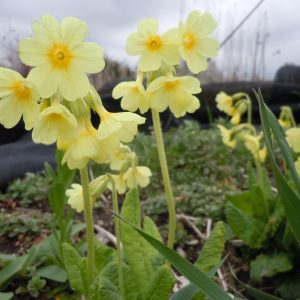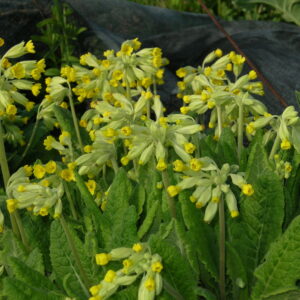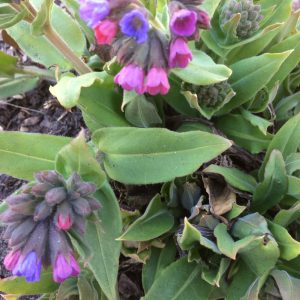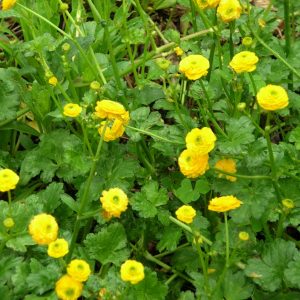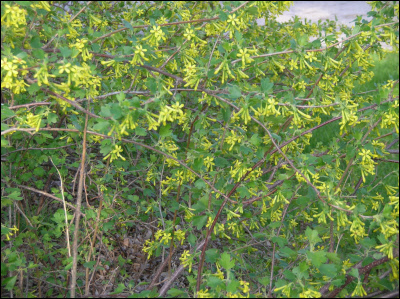Black Walnut Tolerant
Showing 73–80 of 106 results
-
Polygonatum multiflorum Solomon’s seal Z 4-10
Dangling dainty white bells in June followed by black fruit on the arching stem. The leaves “make a fine mass of elegant foliage,” Sanders, 1913.
Dangling dainty white bells in June followed by black fruit on the arching stem. The leaves “make a fine mass of elegant foliage,” Sanders, 1913.
Size: 5' x 10"
Care: shade in fertile, humusy, well-drained soil. Good dry shade plant
Native: Europe and AsiaGreek physician Dioscorides named Polygonatum in the 1st century, which means “many jointed” referring to scars on the rhizome. Medieval herbalists opined that Biblical figure Solomon put scars on the rhizome to demonstrate the plant’s curative powers. P. multiflorum cultivated in English gardens by 1450. In 1596 English herbalist Gerard endorsed its use to repair broken bones – mix the pulverized root and drink it with ale to “gleweth together the bones in very short space.” He also claimed fresh stamped root of Polygonatum would cure cuts and bruises for “women’s willfulness in stumbling on their hasty husband’s fists.” According to Culpepper, Italian wives “much used” this remedy. American gardens since 1700’s.
-
Polystichum acrostichoides Christmas fern Z 3-10
Leathery, lance-shaped evergreen fronds stay fresh and green through winter.
OUT OF STOCK
Leathery, lance-shaped evergreen fronds stay fresh and green through winter.
Size: 18" x 18"
Care: part shade to full shade in most any soil, nearly indestructable
Native: Every state east of the Rockies, Wisconsin native
Awards: Kentucky's Theodore Klein Plant AwardEvergreen fronds last all winter. Called “Christmas” because in the past florists used the evergreen fronds in holiday arrangements. Collected by Michaux before 1800. Collected by French botanist and plant hunter André Michaux (1746-1802) while searching east of the Mississippi River before 1800.
**LISTED AS OUT OF STOCK BECAUSE WE DO NOT SHIP THIS ITEM. IT IS AVAILABLE FOR PURCHASE AT OUR RETAIL LOCATION.
-
Primula elatior Oxlip Z 4-9
Nodding trumpets of soft yellow flowers with a dark yellow center atop upright stems
OUT OF STOCK
Nodding trumpets of soft yellow flowers with a dark yellow center atop upright stems
Size: 10” x 10”
Care: part shade in moist to moist well-drained soil
Native: Europe
Wildlife Value: Deer and rabbit resistant. Attracts bees, butterflies, some moths and hummingbirds.
Awards: Plant Select® Central Rocky Mountain region; Royal Botanical Society Award of Garden MeritPrimula is from Italian “primavera” meaning first spring. Elatior means “tall”, all things being relative it’s taller than some Primulas but not very tall. In gardens since at least 1765. According to Philip Miller, Gardener’s Dictionary 1768, “they are much used in medicine.” Grown at America’s 1st botanic garden, Elgin Botanic Garden 1811.
-
Primula veris Cowslip Z 3-8
Sunniest of yellow trumpet flowers announce the beginning of spring atop short, leafless stems
Sunniest of yellow trumpet flowers announce the beginning of spring atop short, leafless stems
Size: 8" x 8"
Care: part shade in moist to moist well-drained soil.
Native: Europe
Awards: England’s Royal Horticultural Society Award of Merit and Elisabeth Carey Miller Botanical Garden Great Plant PicksPrimula is Italian “primavera” meaning first spring. Veris is redundant, meaning flowers in spring. According to legend, Cowslip decorated the entrance to Norse goddess Fryda’s palace. The blossoms were used to make wine; a recipe from the 1700’s called for water, sugar, lemon juice, egg whites and a “peck of cowslips.” Culpepper, a 1500’s herbalist, reported that cowslip extract made women “more beautiful.” Cowslip was a favorite Shakespearean plant. Grown at America’s 1st botanic garden, Elgin Botanic Garden 1811. Jefferson received cowslip seeds in 1824. Pressed specimen in Emily Dickinson’s herbarium.
-
Pulmonaria angustifolia Narrow-leaf lungwort, Blue cowslip Z 4-8
One of the earliest to flower - Pink turning azure blue, trumpet-shaped flowers in April- May. Fuzzy foliage.
Welcome spring with this very early flower – Pink trumpet-shaped flowers turn deep blue in early sprng.. Fuzzy foliage.
Size: 12”x 12”
Care: full to part shade in moist to moist well-drained soil.
Native: Austria & Hungary.
Wildlife Value: walnut and deer tolerant. Early source of nectar for bees.
Awards: Royal Horticultural Society Award of Garden MeritAngustifolia means “narrow leaves.” Grown in gardens before 1590’s.
-
Pulmonaria saccharata ‘Mrs. Moon’ Greater lungwort, Bethlehem sage Z 3-8
In early spring funnel form pink flowers turn to blue above bristly, white mottled green foliage. Leaves attractive through fall
OUT OF STOCK
In earliest spring funnel form pink flowers turn to blue above bristly, white mottled green foliage. Leaves attractive through fall
Size: 8-18” x 18-24”
Care: full to part shade in moist well-drained soil
Native: species France & Italy
Wildlife Value: walnut and deer tolerant. Early source of nectar for bees.The species originally described by English botanist and gardener to Queen Mary, Leonard Plukenet (1641-1706) .Described by Philip Miller (1768) as having “spotted leaves as if they were incrusted with sugar.” ‘Mrs. Moon’ cultivar offered for sale in 1938 by Gardenside Nurseries in Shelburne VT. Name Pulmonaria from Latin pulmo or lung (e.g.today’s pulmonary) because the blotched leaves were considered to resemble lung disease. Saccharata comes from Latin word for sugar because the white bristly leaves resembled sugar coating.
-
Ranunculus repens var. pleniflorus Creeping buttercup Z 3-9
Small bright yellow nearly ball-shaped flowers blooming in May - June on this short groundcover.
Small bright yellow nearly ball-shaped flowers blooming in May – June on this short groundcover.
LIMITED QUANTITES AVAILABLE, LIMIT OF 1 PER CUSTOMER PLEASE
Size: 10" x spreading
Care: part sun to shade in moist soil
Native: Europe, Siberia, from Newfoundland to VirginiaRanunculus is Latin for little frog, so named by Roman naturalist Pliny (23-79) referring to the wet conditions required by some ranunculus. In 1629 John Parkinson (1567-1650) apothecary to James I and royal botanist to Charles I, called this Ranunculus protensis flore multiplici. The root was supposed to break persistent sores by “drawing the venome to the place.” Jefferson planted Creeping buttercup at Monticello in 1782; it may or may not have been this double.
-
Ribes aureum syn. Ribes odoratum Clove currant Z 3-8
Early to mid-spring yellow flowers shaped like a tube with 5 petals opening wide at the ends smother the shrub giving off a sweet, clove-scented fragrance – heavenly. Ships only in spring.
Early to mid-spring yellow flowers shaped like a tube with 5 petals opening wide at the ends smother the shrub giving off a sweet, clove-scented fragrance – heavenly. Ships only in spring.
Size: 6' x 6' spreading
Care: Sun in moist well-drained to well-drained soil.
Native: west-central US
Wildlife Value: Attracts bees, butterflies and hummingbirds for nectar. Small mammals eat the berries. Immune to Walnut toxinsMany tribes ate the berries. Shoshone and Paiute used the shrub’s inner bark to heal sores and swellings. Meriwether Lewis on the Lewis & Clark Expedition found this in 2 locations – “near the narrows of the Columbia” April 16 1806, now Klickitat County Washington, and on July 29, 1805 in Montana.
**LISTED AS OUT OF STOCK BECAUSE WE DO NOT SHIP THIS ITEM. IT IS AVAILABLE FOR PURCHASE AT OUR RETAIL LOCATION.


